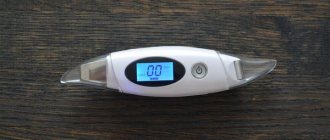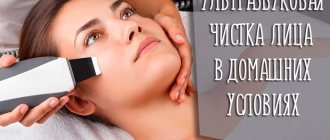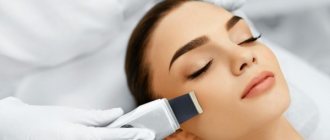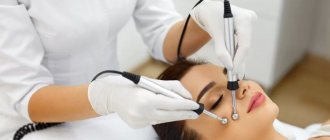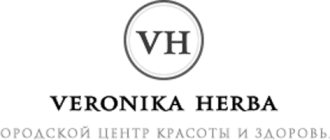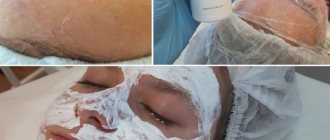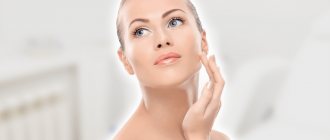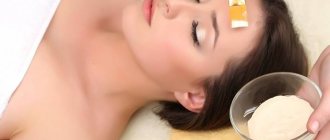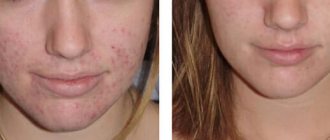Our skin is constantly exposed to the environment. Ultraviolet radiation, dust and dirt, frequent stress and hormonal imbalances negatively affect the condition and health of the epidermis. Constant makeup causes pores to become clogged with makeup residue, even if we wash it off thoroughly.
To stay healthy and clean, the skin needs daily cleansing and gentle care. There are a huge number of cosmetics, masks, peelings and scrubs for cleansing and moisturizing the face. But can home care completely rid the skin of impurities and give it freshness and beauty?
Unfortunately, home remedies are superficial and have short-lived effects. Cosmetologists have long proven that professional facial cleansing is necessary at least once a month. Only with the help of high-quality salon products and special tools can a positive and effective result be achieved.
How long does the session last?
On average, the entire procedure takes about an hour, depending on the characteristics of the patient’s skin:
- Preparation for cleaning (disinfection, warming up) - 20 minutes;
- Chemical exposure - 10-15 minutes;
- Working with an ultrasonic device - 10-15 minutes;
- Mechanical cleaning - 5-10 minutes;
- The procedure for moisturizing and soothing the skin takes 20-25 minutes.
If the patient is trying ultrasonic cleaning for the first time, treatment of the skin with an ultrasound device lasts no longer than 4 minutes. In subsequent sessions, the time increases.
Ultrasonic cleaning may end prematurely if allergic irritation or severe pain is detected in the patient.
Comparative characteristics
| Cleaning | Peeling | |
| Type of impact | Mechanical | Mechanical, chemical, biological, hardware |
| Depth of influence | Superficial | Superficial, middle, deep |
| Mechanism of action | Skin cleansing to remove minor imperfections and impurities | Skin exfoliation to combat mid to deep epidermal problems |
| Effect | Cleansing the skin of comedones, sebaceous plugs and other impurities, smoothing the skin surface, improving blood microcirculation | Rejuvenation, increased tone, reduced skin greasiness, elimination of age spots, scars, post-acne, wrinkles |
| How is the procedure performed? | By exposing the skin to special mechanical instruments or an ultrasound machine | By exposing the skin to special microparticles, acids, alkalis, enzymes or lasers, radio waves |
| When can it be done? | All year round | Autumn-spring period (some options - in summer) |
| Minimum number of procedures for visible effect | The effect is noticeable after the first procedure (it is not recommended to do mechanical cleaning more than 2 times a year) | 5-10 procedures (does not apply to deep peelings) |
What you can and cannot do after the procedure
Ultrasonic cleaning involves removing the top layer of the epidermis. After the procedure, the skin is very sensitive to the external environment. Therefore, cosmetologists tell us what should be avoided in the near future:
- Visiting a bathhouse, swimming pool or sauna;
- Applying cosmetics for 9-10 hours;
- Walking in warm sunny weather.
Instead it is recommended:
- Use moisturizer twice a day;
- Apply only natural, nourishing cosmetics;
- Use sunscreen;
- Eat healthy, vitamin-rich foods;
- Drink more water;
- Rub your face with ice cubes.
The recovery period for the skin is short. During this time, the face becomes in order, the patient’s well-being and mood improve - after all, it’s always nice to just take care of yourself.
Care after acid peeling
Cleaning with exfoliants is the main cosmetology trend in recent years. This is the most gentle procedure using high concentration fruit acids. They dissolve dead cells of the stratum corneum and cleanse the pores from the inside - they treat even complex forms of acne and tighten the texture of the face. In addition, dry cleaning helps cope with photoaging: it stimulates the production of collagen and elastin, smoothes wrinkles, and removes pigmentation.
Despite the absence of physical damage, specific facial care after cleansing and peeling is still required. AHA and BHA acids increase sensitivity to ultraviolet radiation—be sure to apply sunscreen with 30 SPF or more before going outside.
Effect of ultrasonic facial cleansing: before and after photos
Looking at the photo of ultrasonic facial cleansing, you can see a noticeable difference before and after the procedure.
Most patients leave positive reviews about the procedure, because it is inexpensive and fairly painless.
pros
Patients of cosmetology centers note that:
- Ultrasonic cleaning does not injure the skin, like many other mechanical procedures. The epidermis quickly recovers and only turns slightly red;
- The skin does not stretch or deform, but becomes elastic and taut;
- The procedure does not take much time and significantly improves the condition.
Ultrasonic facial cleansing is suitable for any type of epidermis. But for patients suffering from dry skin, it is recommended to do it less often.
Home cleaning
At home, you can carry out any of the procedures, with the exception of hardware. However, the effectiveness of home and professional products is not the same. The skill of execution also matters. But the most important thing is diagnosis. Patients often confuse sensitive skin with dry or oily skin. They cannot distinguish combination skin from oily skin if there are rashes. Which leads to the choice of overly aggressive care for the entire face.
If absolutely necessary, you can carry out both mechanical and chemical cleaning at home. In the first case, the main thing is to ensure sterile conditions. Violation of this rule can lead to the formation of ulcers and even blood poisoning. Home cleaning using chemical acids is either ineffective or unsafe.
Which is better - laser or ultrasonic cleaning?
It is impossible to say which procedure is better - laser or ultrasound - since they have a number of features that distinguish them from each other.
For example, laser facial cleansing is recommended for those who have serious skin problems. Wrinkles, severe rashes, acne - the laser literally burns the epidermis layer, ridding the face of these imperfections.
This type of cleansing is usually carried out on older people; it can be harmful to young skin. This method is painful and has even more contraindications than ultrasound, and ultrasonic facial cleansing is less expensive.
Laser should be used as a last resort, since after the procedure there is a long recovery period and complications are possible.
It is for these reasons that it is impossible to give an exact answer as to which is better. If the problems with the face are serious, laser cleaning is suitable, and when the skin just needs to be cleaned of the stratum corneum, ultrasonic cleaning is suitable.
Facial peeling procedure
The main task of peeling is to remove the stratum corneum and various impurities, increase epithelial tone, and eliminate excessive oiliness. Regularly performing this simple and safe procedure will help renew the epithelial layer on the face, neck and décolleté.
Features of the procedure, indications
Peeling is a fast and effective manipulation, often used in aesthetic medicine. The popularity of this procedure is explained by the visible results and clearly understood mechanism of action. Peeling implies not just the removal of the stratum corneum of the skin, but also a deep effect on the epidermis, eliminating serious cosmetic (and not only) defects.
Indications:
- Age-related changes;
- Loss of skin elasticity;
- Irregularities of the epidermis;
- Thickening of the stratum corneum;
- Hyperpigmentation;
- Dull skin;
- Excessive work of the sebaceous glands;
- Preparatory stage before carrying out more serious cosmetic procedures, etc.
Peeling classification
The classification of peelings is quite extensive. It can be simplified by dividing all varieties into 2 categories: according to the depth of action and the agent affecting the skin.
According to the depth of impact, peelings are:
- Superficial - affects exclusively the stratum corneum. Thanks to this, it is possible to predict side effects and adjust both preparatory treatment and post-procedural care. This is the best option for problem, oily skin. Suitable for treating acne, narrowing enlarged pores and eliminating minor age-related defects. Superficial peeling is ineffective for deep age-related skin changes. As a rule, acids in various concentrations are used for the procedure.
- Median - affect not only the stratum corneum, but also living epithelial cells, without damaging the basement membrane. This procedure is recommended to combat obvious signs of age-related skin changes (folds, wrinkles, post-acne, among others) and as a preparation before aesthetic surgery.
- Deep - affects the deep layers of the skin, reaching the reticular dermal layer. This procedure is aggressive, so it can only be performed in a hospital under anesthesia. Recommended option for deep wrinkles and sagging skin in the chin area. The risk of complications is high, but the result is worth it: visually the skin will be 10-15 years younger.
Depending on the agent that exfoliates the skin, peelings are divided into:
- Mechanical (dermabrasion, etc.) - with microdermabrasion, tiny particles of a substance are released onto the surface of the skin under high pressure, cutting into the epidermis (aluminum or magnesium oxide, soda, etc.). The procedure is quite painful, so local anesthesia is required. This kind of peeling is considered average. Dermabrasion is the grinding of the skin with a milling cutter in layers. Local anesthesia is also required. Considered a medium/deep peel.
- Chemical (alkalis and acids). Concentrated acids are used during the procedure. The concentration is always selected individually, based on the condition of the skin and the expected effect. The composition is applied to cleansed skin, neutralizing after a few minutes. During its exposure, keratinized epithelial cells will dissolve: thereby stimulating the production of collagen, as well as new, healthy skin cells.
- Biological (enzymes or enzymes) – concentrated proteolytic enzymes (trypsin, papain, etc.) are used for peeling, gently and effectively exfoliating dead cells.
- Laser (laser, radio wave) – so-called deep grinding. A high-frequency radio wave or laser beam penetrates the upper layer of the epithelium, literally evaporating dead cells from it. But penetration into deep tissues does not occur: the possibility of scarring and other complications is excluded. The procedure is performed exclusively on an outpatient basis.
What complications can there be?
If the peeling procedure is carried out without following the rules, the patient has not indicated some features of his body, the following complications may arise:
- Redness and rash;
- Increased sensitivity of the skin when touched;
- Peeling and dryness;
- Edema;
- Active secretion of sebum.
The recovery period in case of complications is extended. Such a procedure will not only not benefit the patient, but will also worsen the situation.
Is it possible to combine?
Peeling and cleansing have different effects on the skin, and experts say that these procedures can be combined. They will not only complement each other, but will also allow you to achieve maximum efficiency.
Before combining procedures, it is recommended to consult with a qualified cosmetologist who will tell you the order of their implementation. Both cosmetic procedures, despite their differences, can heal and cleanse the skin, making it younger and fresher. To choose the best method for yourself, do not forget to consult a specialist.
